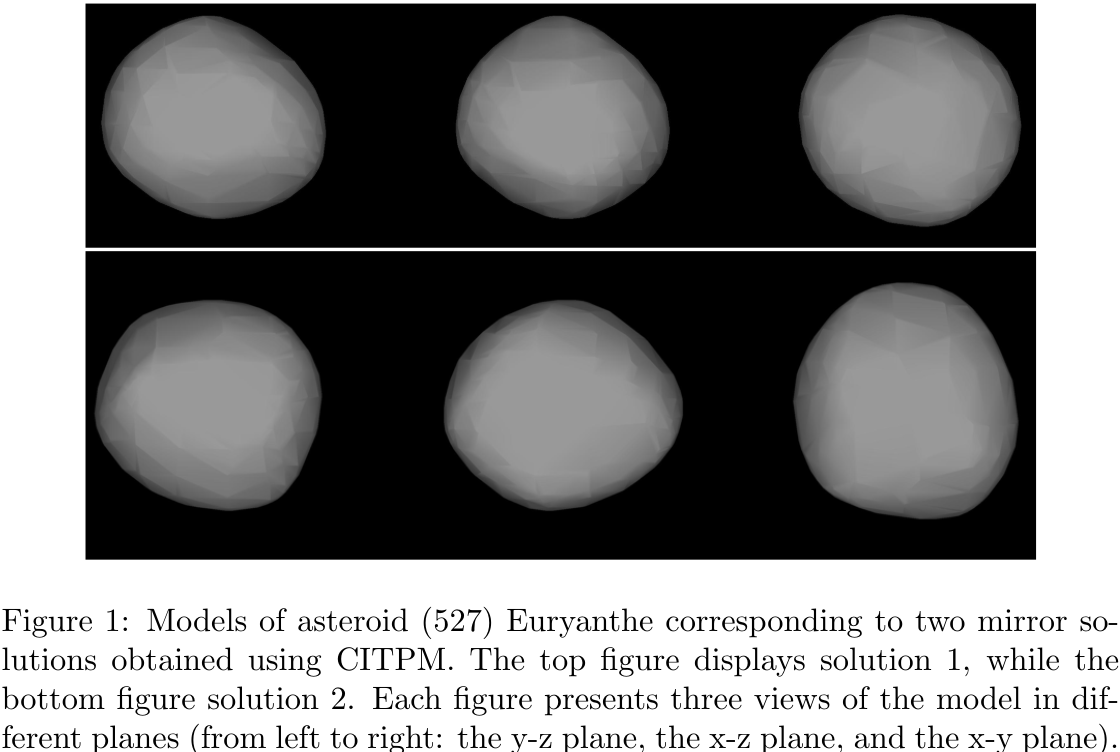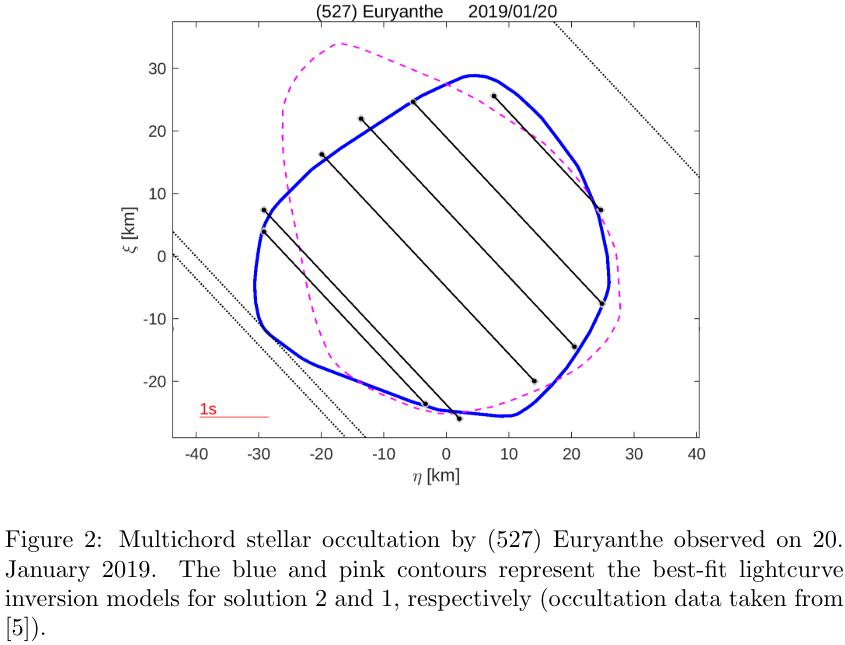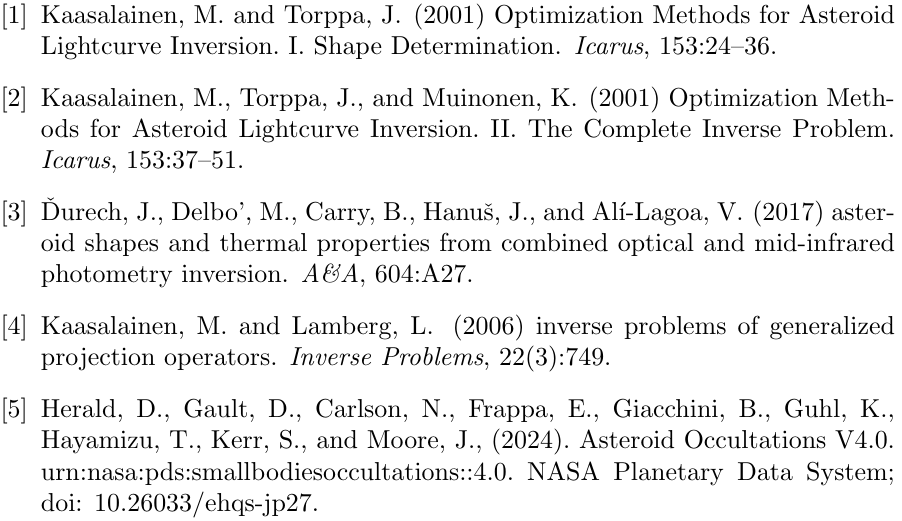Determining the sizes of selected asteroids with different techniques
- 1Astronomical Observatory Institute, Faculty of Physics, Adam Mickiewicz University, Poznan, Poland
- 2Astronomical Institute, Faculty of Mathematics and Physics, Charles University, Prague, Czech Republic
Introduction:
Determining the physical parameters of asteroids is a complex yet crucial
task in planetary science. Recent advancements in observational techniques and
the availability of vast data have led to the development of numerous analytical
and modelling approaches for parameter determination.
In our research, we focused on studying several main-belt asteroids using
high-quality data. Initially, we modelled visible lightcurves using convex inver-
sion (see [1] and [2]) obtaining precise information on the spin axis and an initial
shape model. Subsequently, we used these results as input for another mod-
elling technique called Convex Inversion Thermophysical Model (CITPM, see
[3]). CITPM optimizes the model based both on lightcurves and thermal data,
providing output such as surface roughness, temperature distribution, thermal
inertia, and asteroid size. Additionally, by fitting the initial models to stellar
occultation observations, we determined asteroid sizes with another recognized
precise method. This revealed a good agreement with the sizes determined by
CITPM, enhancing the credibility of its other output parameters.
Results:
asteroid (527) Euryanthe. The CITPM model for solution 1 and solution 2 are
shown in Figure 1. Due to the mirror-pole ambiguity, we obtain two possible
solutions (see [4]). Some of the parameters derived using the CITPM are given
in Table 1. Additionally, Figure 2 shows a fit of our models of (527) Euryanthe
to a stellar occultation by this asteroid observed on 2019-01-20. The best fit was
obtained for pole solution 2, and the corresponding size was found at 52.7 ± 1.8
km.
Conclusions:
The utilization of quality data has enabled the generation of reliable asteroid
models. Furthermore, the supplementary use of the occultation observation
technique, renowned for its accuracy in determining asteroid sizes, has proven
to be consistent with sizes determined via the CITPM technique. Without such
models as presented above, asteroid sizes tend to be determined with an order
of magnitude poorer accuracy.


References:

How to cite: Choukroun, A., Marciniak, A., and Ďurech, J.: Determining the sizes of selected asteroids with different techniques, Europlanet Science Congress 2024, Berlin, Germany, 8–13 Sep 2024, EPSC2024-597, https://doi.org/10.5194/epsc2024-597, 2024.